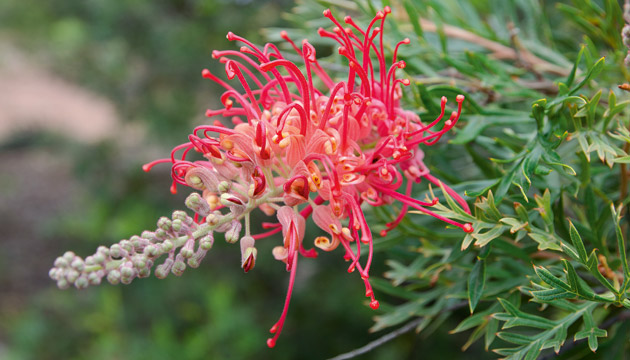Friends of Myall Park Botanic Garden ensure the legacy of David Gordon – ‘the grand old man of Australian flora’ – lives on.
Story and photos Mandy McKeesick
On a ridge above a brigalow and belah scrub lies a little-known heritage-listed botanical garden. “I never thought it would be out here,” caretaker Scott Kielly-Coleman says of the 130-hectare garden, located near the small town of Glenmorgan in southern Queensland. Myall Park Botanic Garden is a testament to not only a life-time of devotion by its founder David Gordon, but to the volunteers who have kept the garden flourishing since David’s death in 2001.
David began planting Australian natives on his sheep property in the early 1940s, sourcing seed from as far away as Western Australia. Using wealth derived from the wool boom, he established a seed bank and a herbarium and employed a team of nurserymen. When other farmers were clearing the land, often infested with prickly pear, David was irrigating 90ha of garden, leaving a 40ha edging of native bush as a buffer to the outside world.
As David planted, his wife Dorothy painted – her detailed botanical art recording the rich heritage of often rare and threatened species accumulating in the garden. Holidays with their four children became seed- and specimen-collecting trips as acacias, eremophilas, hakeas and banksias made their way back to Myall Park to grow alongside the pastel-barked angophoras and the stark Chinchilla white gums.
The garden’s pivotal moment came in the 1950s with the development of a hybrid grevillea. Named after David and Dorothy’s daughter, who was to tragically die at 17, grevillea Robyn Gordon became one of the most popular plants in Australian gardens, turning the focus from English flowerbeds to native beauties. David developed two more grevillea hybrids and named them after his other daughters. “Sandra Gordon is a larger tree with yellow flowers,” Scott says, “and Merinda, which has not been as successful commercially, has a very delicate fuchsia-coloured flower, almost orchid-like in appearance.”
This story excerpt is from Issue #113
Outback Magazine: June/July 2017










